What does a tea set from 2014 have to do with transatlantic slavery?
The recent display of a tea set in our Scottish galleries has thrown new light on an existing display.
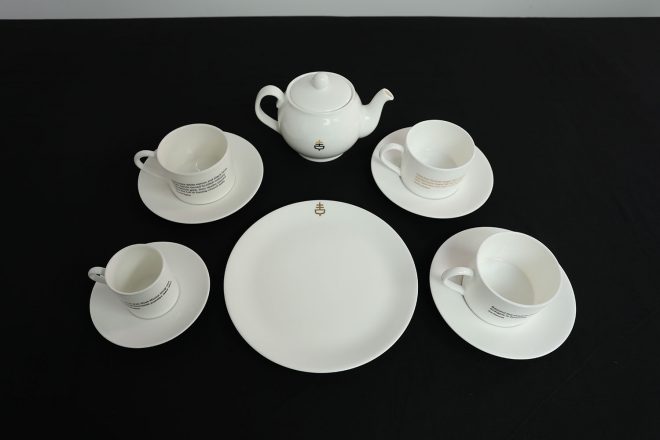
National Museums Scotland has recently acquired pieces from one of the tea sets used at The Empire Café. It has entered the collections as a material record of a moment when the combined forces of activism and scholarship brought this topic to international audiences in the centre of Glasgow – a city with strong links to the history of the slave trade.
The tea set was crafted by Wedgewood from white porcelain. The teapot carries an interesting mark – an outline of a sailing ship and a book fused together and rendered in gold on its belly. The same mark can be found on the accompanying plate, and on the base of the cups and saucers.
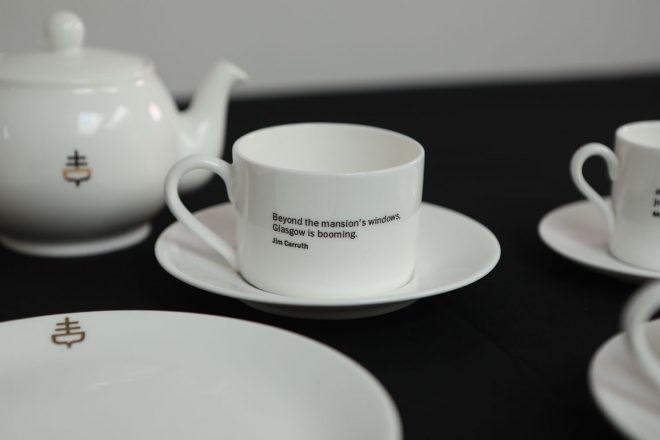
This is the logo of The Empire Café, a space dedicated to discussing Scotland’s links with transatlantic slavery during the 2014 Commonwealth Games in Glasgow. Extracts of poetry by Scottish and Caribbean writers run around the cups in gold and black, reflecting the riches created through Scots’ involvement in slavery.
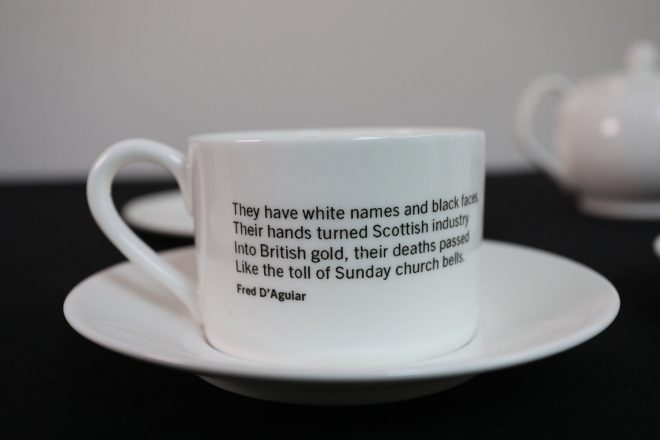
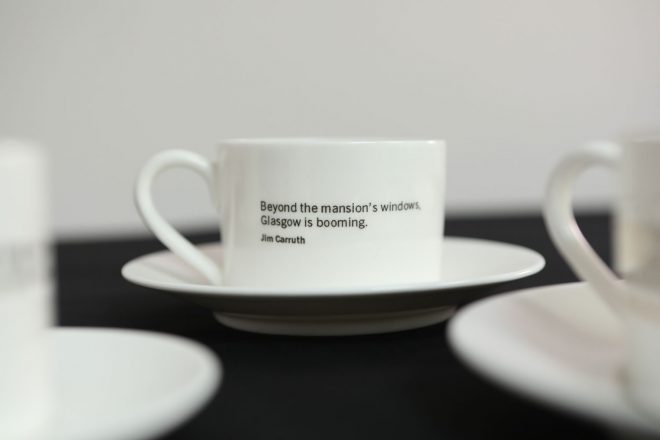
Drinking tea and coffee, eating sugary treats from these pieces, visitors to The Empire Café had conversations about Scotland’s role in the slave trade. From the 17th to the 19th century, the drinking of tea and coffee – and the sugar that went into it – was inseparable from the brutal system of slavery that saw people taken from Africa, shipped to the West Indies and forced to produce the stuff of luxury for growing groups of consumers across Europe. These enslaved people and their children became the property of their owners for life.
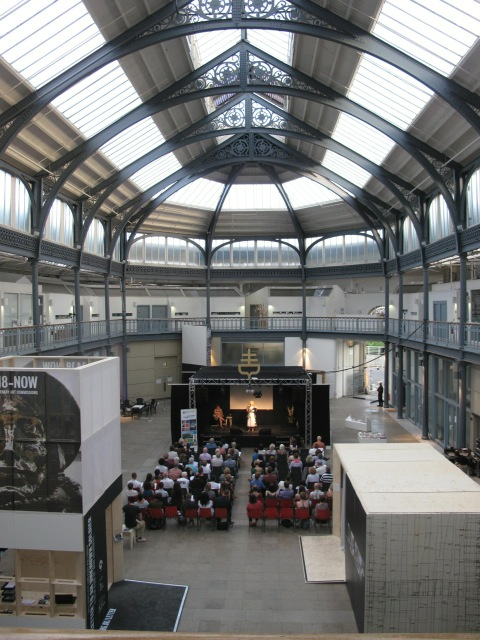
This is an aspect of history that has rarely been associated with Scotland. Until recently, research into our links with the slave system has focused on the Scottish contribution to arguments for abolition. In the past decade or so, new studies have begun to reveal just how involved Scots were in the slave system, as owners of plantations and slaves. The wealth created by slave-based industries such as tobacco, sugar and textiles across the ocean was invested back home. The money was used to build townhouses in our cities, develop country estates, and to buy luxury things – everything from silverware, ceramics and carpets to jewellery and clothing. In this sense, objects survive in public and private collections that are a link to that story.
Pieces from the tea set are now on display at the National Museum of Scotland. They sit as a contemporary intervention in a case of historical artefacts that tell a story of Scots in the Americas during the 18th century. The 21st-century tea set sheds new light on old objects to reframe the way we think about this aspect of our history.
At National Museums Scotland, contemporary collecting is not just about documenting major social, political and cultural change as it unfolds. It is also about marking shifts in the way we understand the past. The Empire Café tea set offers a new way to think through a complex history and its continuing legacy.
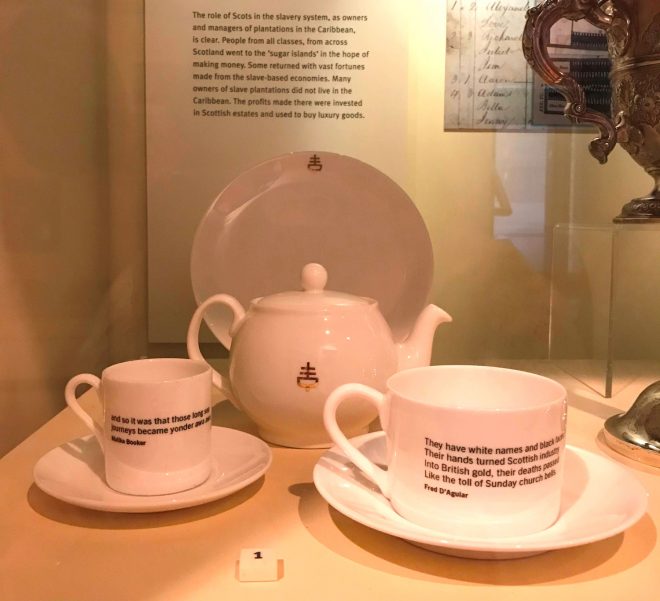
You can see the Empire Café Tea Set on display in the Scots in America gallery on Level 5 of the National Museum of Scotland.
Want to know more? In this film, part of our Collecting the Present series, Professor Sir Geoff Palmer, together with co-creators of The Empire Café Louise Welsh and Jude Barber, reflect on what the tea set tells us about how we understand the history and legacy of slavery in Scotland.
